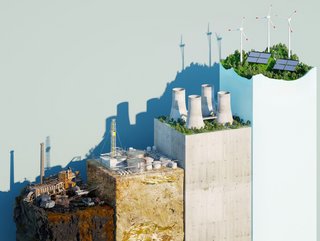Digitalisation Is More Effective Than Carbon Offsets

Any meaningful emissions reduction plan must take the industrial sector into account as one-third of global emissions come from manufacturing. Noting the scale of the problem, manufacturing leaders have set bold goals to reduce emissions in the coming years. However, the challenge is filling the gap between those goals and tangible progress.
Many firms, fearing exorbitant costs to invest in long-term hardware projects, have turned to market-based carbon offsets. By purchasing credits from green energy providers, and engaging in some creative mathematics, they can claim to have lowered emissions without the perceived financial impact of investing in large-scale reduction efforts.
The truth is that reducing emissions does not have to come at an enormous cost. Digital solutions can reduce emissions without the significant investment typically required of hardware projects. Even more importantly, digital solutions are available right now. Hardware-based solutions, such as carbon capture and storage, are critical to reducing industrial emissions but they are long-term initiatives and carbon capture alone cannot be the full solution. In order to truly become sustainable, process industries need to emit less to begin with.
Digitization has a key role to play in this pursuit. Process industries have been investing in digital infrastructure for the last decade with most plants sitting on years of sensor and production data. Machine learning can use such data to drive significant emissions reductions while simultaneously reducing costs. For example, it can tell engineers how much to lower temperatures or shorten processing times without harming the quality of their products. Machine learning can also leverage existing digital infrastructure and drive recommendations to directly reduce emissions—effectively optimizing factories for emissions and cost at the same time.
Progress can be then tracked by using carbon accounting software. Leveraging these kinds of platforms, companies can see exactly how much they are emitting, sort their impact into scope 1, 2, and 3 emissions, and determine where they can focus reduction efforts. Factory optimization software provides a means to accomplish these reductions by digitally solving for the most eco-friendly production settings.
In the past few years, we have seen many of the world's biggest companies claim to have made sustainability progress. In 2023, we’ll expect more companies to adopt solutions that help them fulfill those claims and work towards a more sustainable future for the planet.






